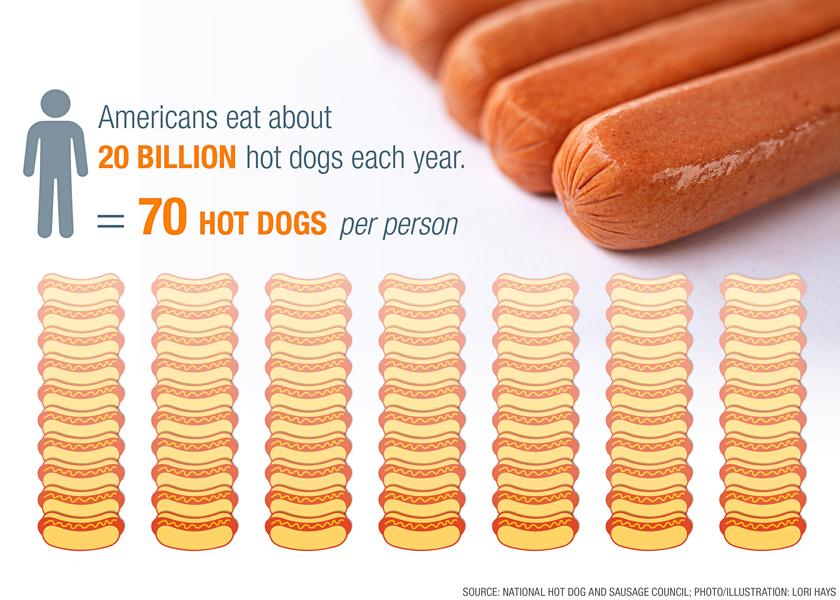The Humble Hot Dog: What Your Mom Didn’t Tell You

According to the National Hot Dog and Sausage Council, Americans eat about 20 billion hot dogs each year. That works out to 70 hot dogs per person each year. For many, hot dogs are associated with American pastimes like backyard barbeques, baseball games, county fairs and community picnics. Despite their popularity, so many people I talk to harbor some skepticism about hot dogs. They are unsure what exactly goes into this tasty treat. So let’s dive into what makes a hot dog…
What's Really in a Hot Dog?
Hot dogs can use any species of meat with the most common being pork, beef and poultry. The meat used is what we call ‘trim’ or the parts of the carcass that don’t end up in main cuts like pork loin chops or Boston butt. This is likely why people have the perception that hot dogs and other sausages are made from scraps.
But in actuality, our ability to use every piece of edible meat from the pig is one way that we maximize the profitability and sustainability of the process. In addition to lean pieces of meat, fat trim or fattier pieces are added. This mixture of meat is then chopped very finely or emulsified. Emulsion is a process where fat particles are brought into a mixture with protein and water. Mayonnaise is another example of an emulsion we eat. The chopping process can cause the meat to heat up so sometimes ice or cold water is added to prevent overheating.
Along with meat, hot dogs contain seasonings, salt and curing agents. The specific blend seasonings for each hot dog recipe will vary but garlic, onion, mustard, pepper, paprika and coriander are some common choices. Salt is added to help stabilize the emulsion and create the texture of hot dogs. Most recipes will also use a curing agent containing nitrite or nitrate to act as a preservative. Oftentimes, these ingredients are dissolved in water to help disperse them throughout the meat.
Once blended, the hot dog batter is stuffed into casings. Casings can be made from many materials. Cellulose or plastic casings are removed from the hot dog after cooking. Collagen or intestinal casings are edible, so they remain with the hot dog after cooking. In their casings, hot dogs are then cooked or smoked. They are then cooled down and the casing, if plastic or cellulose, is peeled off. Then into the package they go.
This means hot dogs are fully cooked when you purchase it. So, in case your mom ever told you that you couldn’t eat a cold hot dog right out of the package…have no fear! Cold hot dogs are safe to eat. My preference is certainly for a hot dog fresh off the grill, but microwaved, boiled, steamed or diced up in mac ‘n’ cheese are all okay by me.
So, whether you top it with mustard, ketchup or relish, I hope you’ll appreciate the humble hot dog next time you get to experience it as one of the many value-added products important to the pork industry.
Your Turn: How Do You Like Your Hot Dog?
Read More:
Americans Love Meat and Say It's a Healthy Choice







